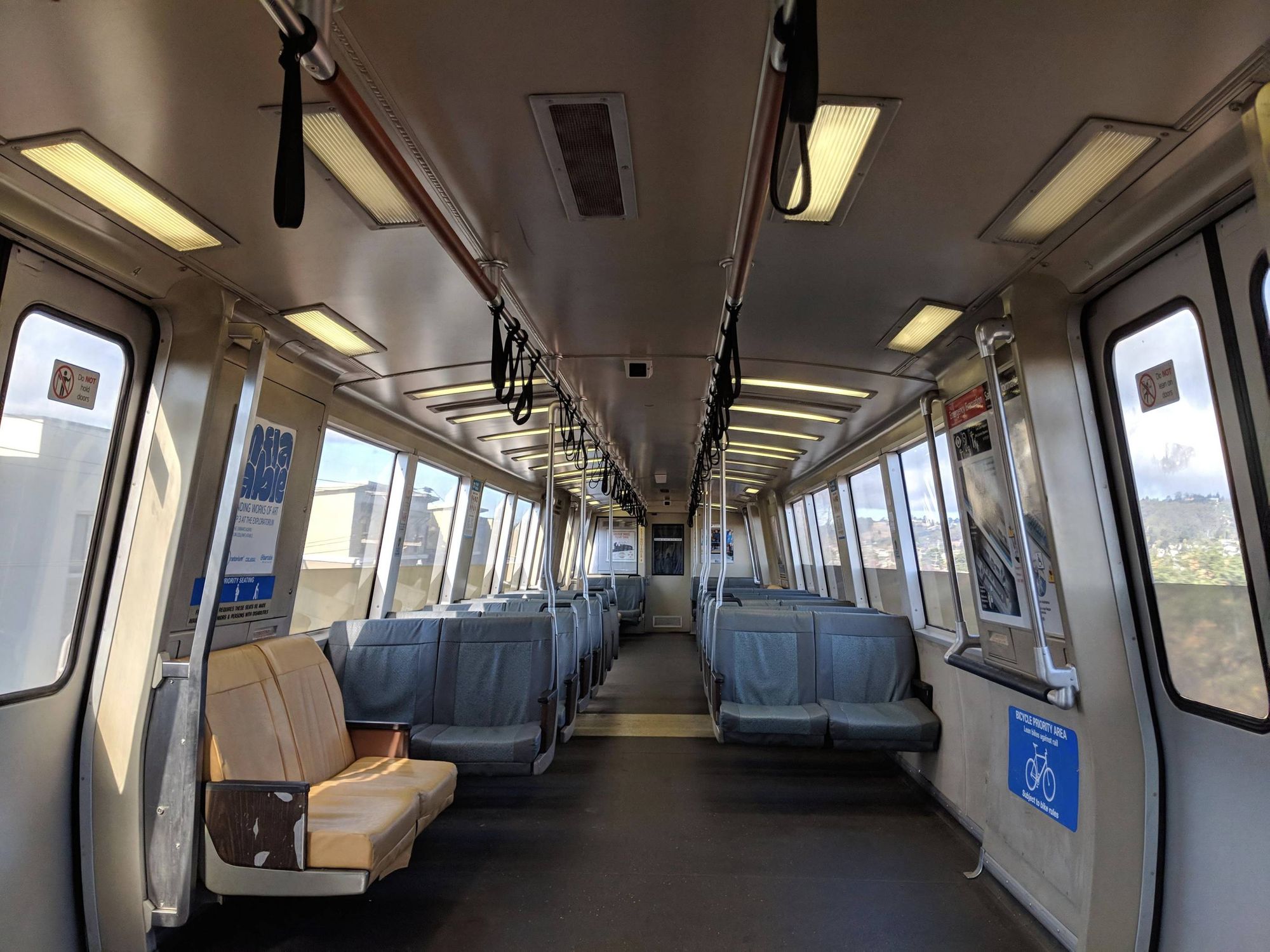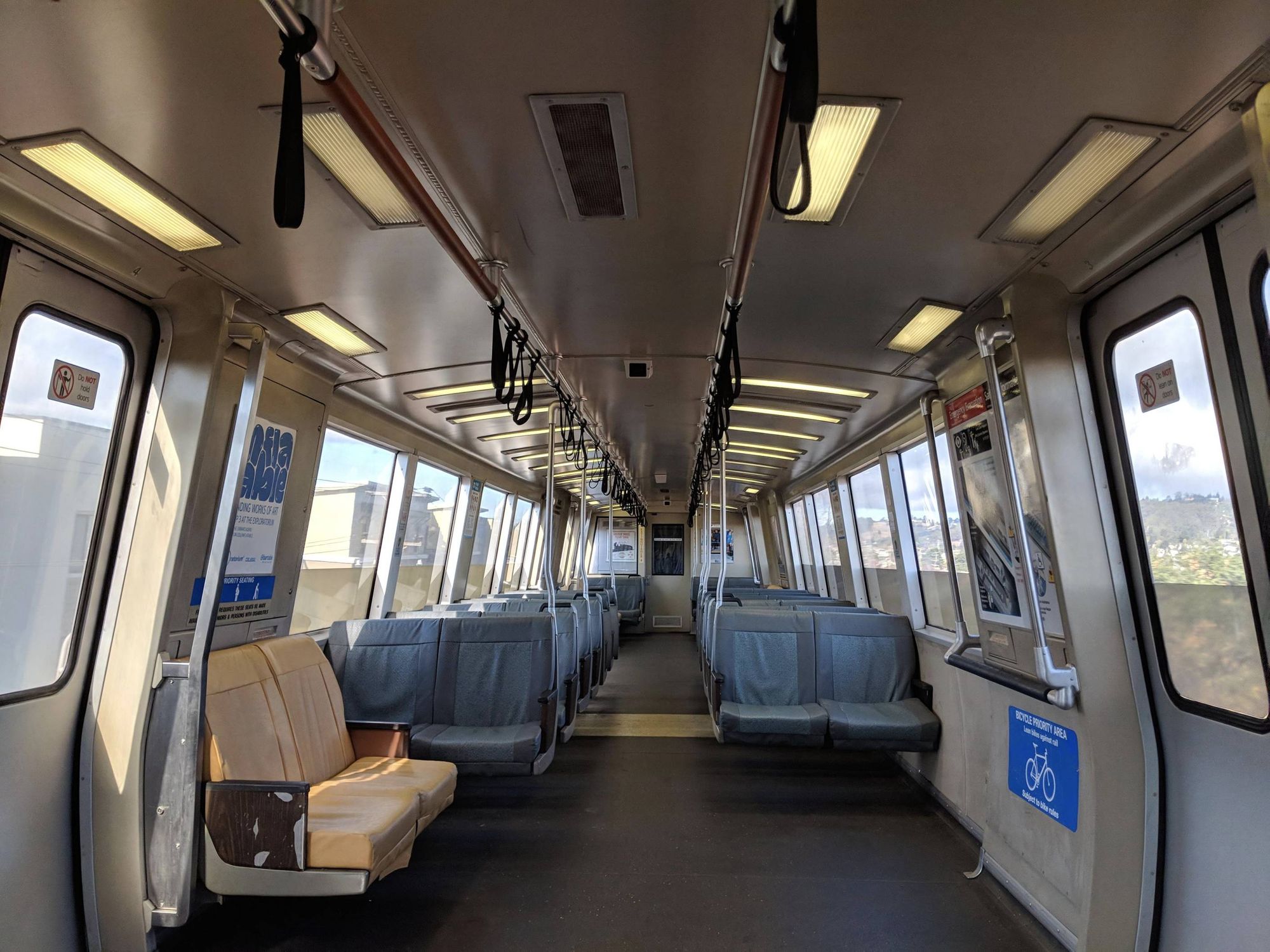Stock markets around the world have been taking a beating since the severity of COVID-19 global pandemic became clear. One sector in particular -- ridesharing as represented by Uber and Lyft -- has fallen even harder than the general markets.
This pessimism is generally well-founded. No one is going out. If you are, it’s to exercise, take a walk, and go to the grocery store, likely in your own car or walking. While none of the other major ridesharing services in other parts of the world are public companies (Grab and Gojek in Southeast Asia, Didi Chuxing in China and Brazil, BlaBlaCar in Europe), the dynamics are the same.
However, I believe these ridesharing platforms will thrive soon after the coronavirus is under control, provide a strong employment “stimulus”, and even replace public transportation.
Sounds crazy? Please hear me out.
Ridesharing Will Suffer, It Will Not Die
Despite the market pessimism, many of these large ridesharing platforms have the cash to survive or the ability to attract additional capital. Uber’s CEO, Dara Khosrowshahi, said on a recent call with reporters and analysts that in a worst case scenario, where rides decline 80% for the rest of 2020, Uber will still have $4 billion USD of unrestricted cash. (After the call, Uber’s stock rose more than 20% from its trough.) Gojek, one of the two dominant ridesharing services in Southeast Asia and the most valuable tech company in Indonesia, raised $1.2 billion USD of venture funding, which closed during the first half of March, right when the global impact of COVID-19 became evident. Didi Chuxing appears to be close to raising $300 million USD from Softbank to fund its autonomous driving unit, though the funding is not for Didi’s ridesharing business directly.
During his media and analysts conference call, a core part of Mr. Khosrowshahi’s argument is that many of the costs associated with operating a ridesharing business are variable costs, meaning if the number of rides go down, so do the costs. Less revenue, less cost.
I do buy this argument.
The ridesharing business is famously asset-light; the platforms don’t own the mode of transportation. That’s why I’m intentionally excluding the scooter and smart-bike sharing companies in this post (e.g. Lime, Bird, HelloBike, etc.), because they do manufacture and own their modes of transportation, which makes the economics of the business materially different. I’m also excluding delivery services, like Uber Eats, or payment gateway products that are run by the same companies just to focus specifically on the impact on transportation itself.
When no one is taking rides due to a mandatory societal behavior change, there is no point in spending money on marketing and ads acquiring customers, which is usually costly. With no rides to share, the computation, data analytics, and overall technical infrastructure cost that go into calculating optimal routes, surge pricing, distance from driver to rider, etc., all go down drastically as well.
One area of heavy cost that is not only going down during COVID-19, but may even stay down after the pandemic is over, is driver subsidies. In a two-sided marketplace business like ridesharing, the supply side tends to be more costly to cobble together than the demand side. In order to give the users that magical, convenient feeling of being able to get a ride from point A to point B whenever they need it (“demand”), you need 3 or 4 drivers available in the vicinity to pick people up (“supply”). Thus, the ridesharing companies are still capital intensive despite not building or owning much physical assets, because they need to spend more than a pretty penny to recruit drivers with ads and referral bonuses, and then push them daily to give as many rides for as many hours as possible. (All these platforms have programs that peg a number of rides given per day to some form of extra payout or gas cost relief.)
This is certainly not to say that the drivers have the more powerful position in this relationship. But whatever leverage, individually or collectively, drivers may have before will likely vanish due to a massive rise in unemployment caused by COVID-19.
Ridesharing Becomes the Employment “Stimulus”
It’s impossible to predict how bad the unemployment situation will be when the dust settles on COVID-19. IHS Markit, an economic analysis and forecasting agency, projects that the unemployment rate in the U.S. will reach 9% by December 2020 (the most recent rate for February 2020 is at 3.5%). That projection sounds too optimistic to me, considering that during the 2008 financial crisis, or the Great Recession, peak unemployment was 10.2% reached in October 2009.
The COVID-19 crisis is most certainly more severe than the Great Recession in all dimensions, and more difficult to both model forward and draw insights from past events. Another thing that’s certain is that mass unemployment typically hit the most vulnerable. During this current crisis, the impact is disproportionately severe on people who are employed in the service sectors, like travel, hospitality, transportation, and events, as well as small and medium-sized businesses.
This will not be only a U.S. phenomenon, but a global phenomenon.
And when these folks who’ve been laid off indefinitely are allowed to go out and resume a modified version of normal activities, where will they turn to to try to make some money? Ridesharing. And this time with no extra subsidies or incentives needed. It may end up becoming a more direct and longer-lasting employment stimulus than any of the options that policymakers have at their disposal.
This increase in supply of drivers will be met with at least some recovery on the demand side. Based on reporting by The Information, Didi Chuxing has seen its service recover from the low of 20% of normal ride volume during the height of the lockdown in China to about 50% in the last few weeks, as the virus appears to be under control in many Chinese cities. And the cheaper driver acquisition cost could lower the cost for riders, which brings us to public transportation.
Replacing Public Transportation
If the ridesharing companies recover and thrive in a new post-COVID-19 era, its services may replace a meaningful chunk of public transportation ridership. And not just in cities like San Francisco, which is already happening because the existing system is poorly designed and falling apart, but also in places where the system is objectively decent and efficient. Because the rides may be cheaper than what they were pre-COVID-19, this replacement will be widespread and last many years.

Why? Two reasons: public health concerns and pace of autonomous driving development.
Public health concerns. Regardless of how you feel about public transportation’s various utilities, we can all agree that it’s a public health weak spot, magnified now by COVID-19. I personally love taking public transportation wherever I can -- for the cost, efficiency, environmental-friendliness, and people-watching -- but never because it’s clean.
It’s a problem in many Asian countries, despite the systems being newer, because the cities are denser. That’s one of the reasons why in most East Asian cities, frequent riders of public transportation have a habit of wearing masks. (Worth noting some other reasons too: air pollution, especially in China, and memories of dealing with SARS.) In the U.S. and Western Europe, the population may be more spread out, but the systems are also older and less well-maintained. These are all regions where I’ve personally used local public transportation. The conditions in less economically advanced regions are likely worse.
Even if public transportation agencies dramatically increase their maintenance input and hose down every seat with disinfectants daily, people’s mental paranoia about public places with lots of other humans will lead to behavior changes and attitude shifts toward public transportation that may be permanent.
But people still need to get to places. So they can either drive themselves or use ridesharing, where the most crowded Uber Pool ride max out at five people including the driver. Of course, the cleanliness of the cars will have to improve too. I can see new features being built into these apps to surface “cleanliness” as a first-class rating with a bigger weight on the driver’s overall rating. Riders may be looking for a “cleanliness badge” before taking a ride, and the drivers will be incentivized to keep things both clean and safe to attract riders. This positive competitive dynamic simply does not exist in public transportation.
Pace of autonomous driving development. The development of autonomous driving technology and “robotaxi” still have ways to go. I don’t want to say “slow”, because that’s a relative judgment. Most of the engineers I know who are working on this problem day in and day out never thought it was going to be fast or easy. The people who thought so are mostly investors, who are generally not good at making these sorts of judgement to begin with.
Autonomous driving and robotaxi services likely will need another decade to mature and be properly regulated in developed economies, and many more decades to reach global scale. In the meantime, human-powered ridesharing will expand as both an engine of employment and a more public-health-friendly version of the existing public transportation services.
This replacement of public transportation will of course not be 100%. There will be people too poor to afford ridesharing. There will be people who don’t have smartphones to get these rides. But the replacement will be a significant proportion, and for the better.
If you like what you've read, please SUBSCRIBE to the Interconnected email list. New posts will be delivered to your inbox (twice per week). Follow and interact with me on: Twitter, LinkedIn.
当共享搭车取代公共交通的时候
自从新冠疫情对全球的影响变得更加严重以后,所有的股市一直狂跌。以Uber和Lyft为代表的共享搭车行业的股票更是惨不忍睹。
这种悲观的视角也是合理的。平常没人出门,出去也就是锻炼,散步,买点菜,要不自己开车,要不就步行。虽然世界其他地区的主要共享搭车服务都还没有上市(东南亚的Grab和Gojek,中国和巴西的滴滴出行,欧洲的BlaBlaCar),但大体情况是一样的。
不过我觉得在新冠病毒得到控制后,这些共享搭车平台将很快复苏,提供强有力的就业“刺激”,甚至取代公共交通。
天方夜谭?请听我说完。
共享搭车会受苦,但不会死
尽管整个市场现在很悲观,但这些大型共享搭车平台许多都有生存的现金或能吸引更多资本的能力。Uber的首席执行官,Dara Khosrowshahi,在最近与记者和分析师的一次通话中表示,在最坏的情况下,比如在2020年余下的时间里乘车量少80%,Uber仍有40亿美元的现金。(电话会议结束后,Uber的股价从低谷上涨了20%多。)Gojek,东南亚两大主要共享搭车服务公司之一,也是印尼估值最高的科技公司,最近募集了12亿美元的风投,而且是在3月上旬完成的,正是COVID-19在全球开始扩散的时候。滴滴出行也即将从软银筹集3亿美元的资金,以支持自己的无人驾驶部门,不过这笔钱并不直接用在滴滴的共享搭车业务上。
在Khosrowshahi先生与媒体和分析师的电话会议上,他的论点的一个核心部分是:运营一个共享搭车平台时许多成本都是浮动的,意思就是如果乘车次数下降,成本也会下降。收入少了,成本也少了。
我认为这个论点是合理的。
共享搭车业务的一大特点就是资产少,这些平台并不直接拥有任何交通工具。这就是为什么我有意不谈共享滑板车和智能自行车的公司(比如Lime,Bird,HelloBike等),因为它们需要制造并拥有所有的交通工具为资产,这种公司的商业模式和共享搭车比是有实质性的不同的。我也在本文里不谈像Uber Eats这样的快递服务和这些公司的其他业务,比如支付,而只是专门分析共享搭车对交通系统的长远影响。
在控制疫情而强制人们不出门的情况下,就没有必要像以往那样在宣传和广告上花大钱争取用户。既然没人搭车,需要用的计算、数据分析和整体后台的基础科技资源也会大幅下降。
还有一种成本,不仅在COVID-19期间在下降,还可能在疫情被控制后也不上升,那就是司机补贴。在一个像共享搭车这种双边市场业务中,拼凑供应方的成本往往高于需求方。为了给用户一种像变魔法般的方便体验,无论何时需要都可以从A点乘车到B点(“需求”),平台需要3或4名司机在附近等着(“供应”)。因此,尽管这些共享平台没什么资产,但仍然需要很多资本,因为他们需要花费一大笔钱来用广告和介绍金聘雇司机,然后还要每天督促他们尽可能多开车,多接客。(这些平台都有促进司机多开车的一些奖励项目,要不多给钱,要不给燃油补贴,并把奖励与每天载客次数挂钩。)
这并不意味着司机群体在和平台公司的关系中有什么优势。司机们在疫情爆发之前有的任何优势现在都会完全消失,因为疫情导致了大幅度的失业。
以开车来“刺激”就业
当COVID-19尘埃落定时,很难预测失业情况会有多糟。经济分析和预测机构IHS Markit预计,到2020年12月,美国的失业率将达到9%(最新的2020年2月失业率为3.5%)。考虑到2008年金融危机期间,失业最高峰是10.2%,而且是在2009年10月达到的,我觉得这预测过于乐观了。
COVID-19危机无疑比2008年金融危机更严重,而且更难预测或从过去事件中汲取教训。另一件毫无疑问的事情是,大规模失业通常影响最严重的是服务行业的人(如旅游、酒店、交通和实体活动)以及中小型企业。
这不仅仅会是美国的未来,更是全世界的未来。
当这些已被解雇的人们可以出门,在某种程度上恢复正常活动的时候,他们去哪里很快赚点钱呢?共享搭车。而且这次不需要额外的补贴或奖励,共享搭车最终可能会成为一个比政府可以做的任何经济刺激计划都更直接、更长久的就业“刺激”方案。
供应方复苏后,需求方也会有一定程度的复苏。根据硅谷科技媒体The Information的报道,滴滴出行的服务已经从乘客量仅20%的低谷在过去几周恢复到50%左右,因为病毒似乎在许多中国城区已得到有效控制。更低的招聘司机成本也会降低搭车的价钱,也就是为什么共享搭车会在某种程度上取代公共交通。
取代公共交通
如果像我所预测的那样,运维共享搭车的公司在COVID-19过去后的新时代复苏并蓬勃发展,其服务会取代相当一部分公共交通的乘客。这种现象在像旧金山这种本身的公共交通就设计的不好而且长年不维修的城市已经开始了。但我觉得这个趋势也会延伸到很多现有公共交通还不错的城市,因为共享搭车会更便宜。这种取代现象将会是广泛的,并且持续多年。

这背后原因有两种:公共卫生问题和无人驾驶的发展速度。
公共卫生问题。不管你个人对公共交通的各种益处持什么态度,大家都认为公共交通本来就是公共卫生的薄弱环节,只是现在被新冠疫情给放大了。我个人其实很喜欢用公共交通,因为既便宜,又有效率,还环保,而且我喜欢看“风土人情”,但乘坐公共交通从来不是因为它干净。
公共交通的公共卫生在许多亚洲国家都是个问题,因为尽管当地的公共交通系统比较新,城市也更密集。这就是为什么在大多数东亚城市,经常用公共交通的人都有戴口罩的习惯。(当然也有其他原因,比如空气污染,尤其在中国,还有应对非典而养成的习惯。)在美国和西欧,人口更分散,但公共交通设施也更旧,维护得也不好。这些都是我个人用过当地公共交通的地方。经济欠发达地区的情况可能更糟。
就算所有管理公共交通的机构都大幅增加维修投入,每天用消毒剂冲洗每个座位,大家对人多的公共场所的心理偏执,也会导致对公共交通看法的永久转变。
但大家早晚还是要出门的。因此,他们要么自己开车,要么就使用共享搭车。最挤的Uber拼车也就坐五个人,包括司机。当然,汽车本身的清洁度也要提高。我可以想象app里未来会有的一些新功能,比如把每辆车的“清洁度”放在很明显的地方,让其对司机的总体分数有更大影响。乘客可能会在乘车前先看看有没有“清洁徽章”,并且会鼓励更多的司机们保持干净和安全来吸引乘客。这种健康竞争在公共交通领域当然是不存在的。
无人驾驶的发展步伐。无人驾驶技术的发展和“机器人出租车”(robotaxi)服务还有很长的路要走。我不想说“慢”,因为这取决于你从谁的角度看。我认识的大多数做无人驾驶的工程师朋友,从来没觉得这是个很快,很容易解决的问题。有这种想法的人大多是投资人,他们一般不善于做这种判断。
无人驾驶和robotaxi服务可能还需要十年的时间才能成熟并得到适当监管,从而在发达经济社会里被普遍使用。而要达到全球规模,那还需要几十年的时间。所以,以人力提供的共享搭车服务会存在很多年,既是个增加就业的引擎,也是个更干净的公共交通工具,从而取代现有的公共交通系统。
这种取代当然不会是100%的。总会有穷人用不起共享搭车服务,总会有人都没有智能手机,但取代的比例会相当大,总体也是个大好事。
如果您喜欢所读的内容,请用email订阅加入“互联”。每周两次,新的文章将会直接送达您的邮箱。请在Twitter、LinkedIn上给个follow,与我交流互动!
